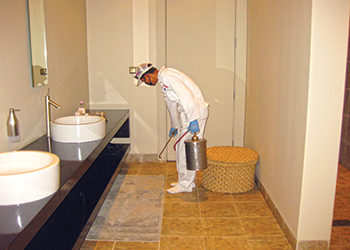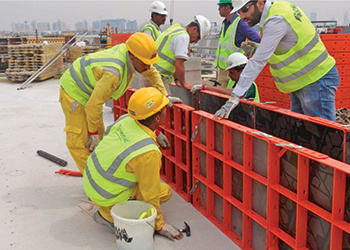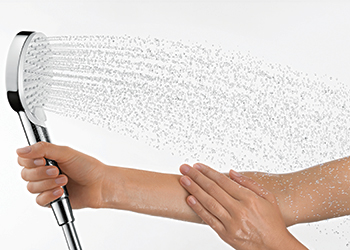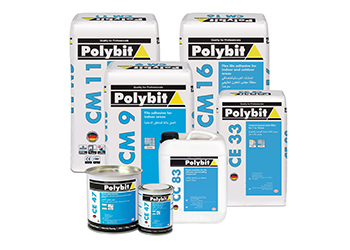
 A Masa operator sprays a bathroom ... preventive pest control.
A Masa operator sprays a bathroom ... preventive pest control.
MIRZA WAQAR AHMAD, entomologist at the Saudi-based Masa Establishment, focuses on a major insect pest that is the bane of hospitality projects worldwide.
Bed bugs are a dominant threat to hotels, palaces and luxury villas worldwide, and so is the case with the hospitality industry in Saudi Arabia. While they are not known to transmit diseases, an allergic reaction to more than a few bites may need medical attention and scratching these bite marks can sometimes increase the chance of a secondary skin infection in humans. They are a cause of damage to property, sleep disturbance, and revenue loss.
Bed bugs (Cimex spp.) are tiny, flat, resurging insect pests which feed exclusively on blood of people and animals – and can live several months without a blood meal. They inject a sedative and an anticoagulant fluid when biting due to which people hardly realise that they are being bitten; some people may face no reaction whereas others are allergic to the bites resulting in severe itching.
Research conducted in the US in 2015, to analyse the economic impact of bed bugs on the hotel industry, showed a considerable reduction in the rental value of lodging rooms and aversion of these particular hotels, resulting in loss to the business.
Luxury hotels are more prone to bed bug invasions due to the high turnover of guests, so any risk of pest infestation needs to be taken very seriously with due attention given to prevention and early detection. This insect pest can be transported in baggage, folded clothes, bedcovers, furnishings, and wherever else they can conceal. Most of the times, people do not realise that they could be transporting bed bugs as they tour from place to place, contaminating locations during their journey.
Usually bed bug infestations take place around or near the sleeping areas in apartments, shelters, homes, hotels, palaces and dormitories. They conceal themselves during the daytime in places such as the seams of mattresses, bed frames, dressing tables, behind wallpaper, in cracks or crevices, or any other items around the beds.
 |
Blood spots on mattresses ... a clear sign of bed bugs. |
The presence of bed bugs can be detected by any of the following:
• Checking the seams of mattress or bed sheets;
• Bed bug skins that have been shed;
• Dark-coloured blood spots that they excrete on the mattress or nearby furniture; and
• A musty odour.
Masa Establishment for Pest Extermination, Maintenance and Contracting, a member of the National Pest Management Association (NPMA) of the US, believes that eradication of bed bugs is tremendously challenging, as this pest has the proven natural ability to resist insecticides, and clients’ cooperation is a must for successful control. Masa is owned by Mousaied Seifeldinn Alshieshakly.
A proper case study of multiple factors should be conducted while selecting the products or processes to control a specified bed bug infestation. As per the treatment plan, it is critical that the occupants of bed bug-infested sites support the pest management technicians in undertaking the various recommended initiatives.
In general, the use of pesticides is frequently involved in the bed bug control services provided by pest control operators. Prior to any pesticide application, a professional applicator must liaise with the inhabitants to determine if anyone has health issues that could be cause for concern if pesticides were used. Such clients should consult their physician prior to pesticide application for bed bug treatment so that treatments are tailored to the physician’s recommendation. The risks of pesticide exposure may be diminished by advising clients about the specific treated areas, re-entry time after application and any specific precautions to be followed. The applicators should lessen the risk of pesticide exposure to pet animals by advising the clients in advance to keep them out of treated areas.
Moreover, non-chemical control methods such as temperature treatments and mattress encasement are very popular. As recommended by the NPMA, temperature and exposure periods for heat treatment should be 113 deg F for seven hours, 118 deg F for 90 minutes, 122 deg F for less than one minute and 160 to 180 deg F for steam treatments, ensuring the surface temperatures rapidly exceed 122 deg F for a successful bed bug control.
In conclusion, the success bed bug treatment plans depend on the selection of an efficient pest control operator assisted with a proper site inspection and an integrated combination of a number of products, techniques and expertise.





















_0001.jpg)


.jpg)
















.jpg)








.jpg)









